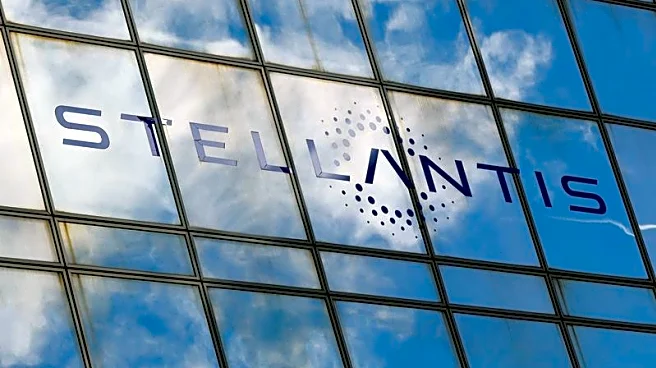What's Happening?
Stellantis has announced a delay in the release of its new strategic direction, now scheduled for Q2 2026. Initially expected in Q1, the postponement was revealed during an analyst call on October 10, 2025. Ed Ditmire, Stellantis' head of investor relations, cited several critical exogenous factors necessitating the delay. These include US tariffs, ongoing policy discussions in Europe, and the orientation of newly appointed executives. The company aims to address these challenges before unveiling its strategy, which is crucial for guiding its future operations and growth.
Why It's Important?
The delay in Stellantis' strategic launch highlights the complex interplay between global economic policies and corporate planning. US tariffs and European policy discussions are significant factors that can impact Stellantis' operations and profitability. The orientation of new executives also plays a crucial role in shaping the company's strategic direction. This postponement may affect investor confidence and market perceptions, as stakeholders await clarity on Stellantis' future plans. The company's ability to navigate these challenges will be critical in maintaining its competitive position in the automotive industry.
What's Next?
Stellantis is expected to continue monitoring and adapting to external factors influencing its strategic planning. The company may engage in further discussions with policymakers to mitigate the impact of tariffs and regulatory changes. As the new strategy is developed, stakeholders will be keen to see how Stellantis plans to address these challenges and leverage opportunities for growth. The upcoming strategy launch in Q2 2026 will be a pivotal moment for the company, potentially influencing its market trajectory and investor relations.
Beyond the Headlines
The delay in Stellantis' strategy launch underscores the broader challenges faced by multinational corporations in navigating geopolitical and economic uncertainties. This situation may prompt other companies to reassess their strategic timelines and consider the impact of external factors on their operations. The automotive industry, in particular, may see increased collaboration with policymakers to address regulatory challenges and foster a conducive environment for growth.












